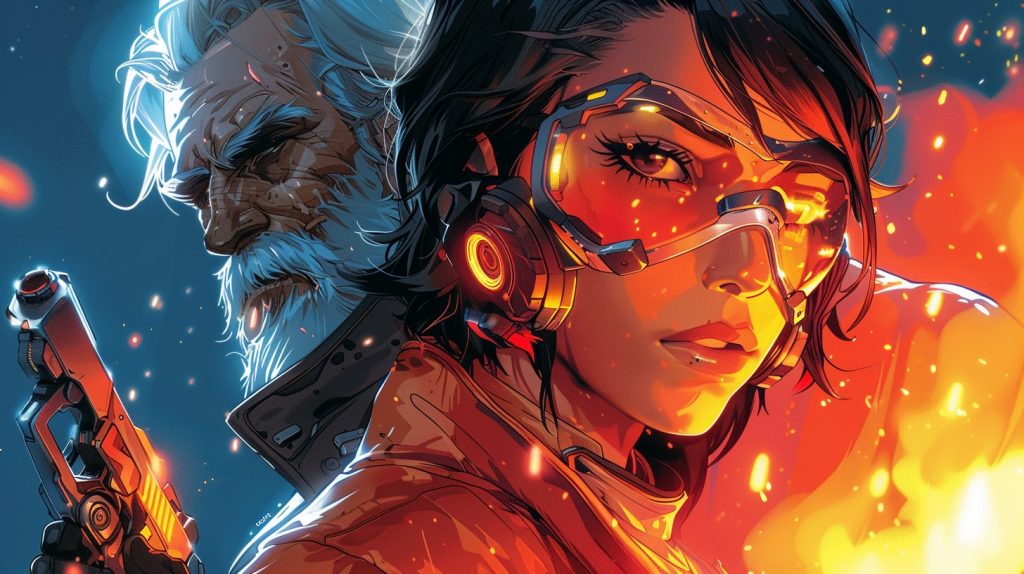
Struggling to decide between the high-octane chaos of Overwatch and the calculated strategy of Valorant? Both games boast massive fanbases and deliver character-driven gameplay, but they offer distinctly different experiences. So, how do you know which one is right for you?
Since its debut in 2020, Valorant has drawn frequent comparisons to Overwatch, fueling ongoing debates among players. Some argue Valorant has surpassed Overwatch, while others remain devoted to Blizzard’s iconic creation. While both titles emphasize unique heroes and team-based play, their gameplay mechanics and competitive scenes couldn’t be more different.
In this article, we’ll explore what sets these two games apart — from their origins to their impact on the esports world. By the end, you’ll have a clear answer to whether Valorant is merely a reimagined Overwatch or an entirely new experience worth diving into.
Overwatch vs. Valorant: A Showdown between two gaming giants
Overwatch and Valorant have captivated gamers worldwide, each offering distinct gameplay, characters, and competitive appeal. Let’s dive into their differences to help you decide which one suits your style.
The Origins of Overwatch and Valorant
Overwatch, released in 2016 by Blizzard Entertainment, redefined the shooter genre with its vibrant, hero-based gameplay. It introduced a diverse cast of characters with unique abilities, emphasizing teamwork and strategy.
Valorant, launched in 2020 by Riot Games, quickly became a major contender in FPS gaming. With its focus on tactical gameplay and precise gunplay, it brought a fresh perspective to competitive shooters.
Gameplay: Similar but different
While both are FPS games, their mechanics and focus differ greatly.
Overwatch emphasizes teamwork and objective-based gameplay, with heroes bringing unique abilities to the battlefield. Whether capturing points or escorting a payload, success relies on collaboration and skillfully using each character’s strengths.
Valorant takes its cues from tactical shooters like CS:GO. It focuses on strategy, precision, and resource management. Players buy weapons and abilities each round, and tight, angle-heavy maps demand careful planning and execution.
Both games offer engaging experiences but cater to different playstyles — choosing between them depends on your preferences.

Gameplay mechanics: A comparative analysis
Overwatch and Valorant offer distinct gameplay mechanics, catering to different playstyles. Understanding character abilities, map design, and weapon systems is key to excelling in either game.
Character abilities and roles
In Overwatch, heroes are divided into three roles: tank, support, and DPS (damage per second). Tanks absorb damage and create space, supports heal and provide utility, while DPS heroes deal high damage to eliminate enemies. Each hero has unique abilities, including a game-changing ultimate that can shift the battle when used wisely.
Valorant takes a different approach. Agents have abilities that must be purchased at the start of each round, adding a layer of strategy. These abilities range from defensive tools like smokes and barriers to offensive options like flashes and explosives. Success depends on teamwork and timing to use these abilities effectively.
Map design and objectives
Both games rely on map design, but their objectives differ. Overwatch maps revolve around tasks like capturing points or escorting payloads. Winning requires teamwork and controlling key areas to secure objectives.
Valorant maps focus on a plant-and-defuse gameplay style, similar to CS:GO. Attackers plant the spike, while defenders try to stop them or defuse the spike. Controlling the map is crucial for gaining information and setting up strong positions.
Weapon systems and economy
The weapon systems and economy mechanics further distinguish the two games. Overwatch heroes come with predefined weapons tailored to their roles and abilities, and players can swap heroes mid-game to adapt to changing situations.
Valorant features an economy system where players buy weapons and abilities at the start of each round. Resource management is critical, requiring teams to decide when to save or spend to gain an advantage.
Overwatch vs. Valorant: A comparison
When it comes to competitive FPS games, Overwatch and Valorant are two giants with millions of players worldwide. Both are staples of the gaming community, but how do they compare in terms of player base, community experience, and developer support?
Player base
Overwatch’s popularity has fluctuated, but the launch of Overwatch 2 revitalized the franchise, drawing back old fans and attracting new ones. Valorant, meanwhile, has steadily grown since its release, becoming a major competitor. Today, both games have similar player counts, competing for dominance.
Community and player experience
Toxicity is an issue for both games, with reports of harassment and abuse in their communities. Blizzard, behind Overwatch, and Riot Games, creators of Valorant, are working to improve player experiences through various initiatives.
Developer support
Riot Games sets a high bar with Valorant’s frequent updates, new maps, balanced agents, and player-driven feedback, keeping the game engaging. Overwatch 2, however, has faced criticism for feeling more like an update than a true sequel. While Blizzard promises consistent updates and new heroes, many players remain dissatisfied with the pace of improvements.

Esports and competitive play
Both games have made significant marks in esports, though their paths differ. The Overwatch League, launched in 2018, highlighted the game’s potential but has struggled with declining engagement and sustainability. Valorant, debuting in 2020, quickly rose to prominence. The Valorant Champions Tour has drawn top-tier teams, and Riot’s continuous updates and strong support have solidified its esports presence.
Looking ahead, Valorant seems better positioned to thrive in the esports space, thanks to its momentum and active developer support. Overwatch’s future is less certain, with declining viewership and organizational challenges raising concerns. However, both games maintain passionate fanbases and competitive players dedicated to mastering their craft.
Character design and aesthetics
Overwatch and Valorant shine in character design, offering vibrant visuals and unique styles that engage players. Both games also provide plenty of cosmetic options for personalizing characters.
Art style and visual appeal
Overwatch features a bold, colorful art style with exaggerated characters that match its fast-paced, fun gameplay. Its playful design makes the game dynamic and approachable.
Valorant takes a more modern approach with clean, polished visuals. While slightly stylized, its realistic designs improve clarity, helping players easily identify characters and follow the action. This precision adds to its competitive feel.
Character diversity and representation
Diversity is vital in modern gaming, and both Overwatch and Valorant reflect global communities through their characters.
Overwatch is known for its inclusive roster, featuring heroes from various cultures and identities, creating a strong sense of belonging for players.
Valorant also emphasizes representation, with characters like KAY/O, a non-binary agent, sparking conversations about diversity. As it expands, Valorant is likely to introduce even more diverse characters.
Both games also offer a wide range of skins, allowing players to customize characters and express themselves. These cosmetics not only enhance gameplay but also support the games’ development.



